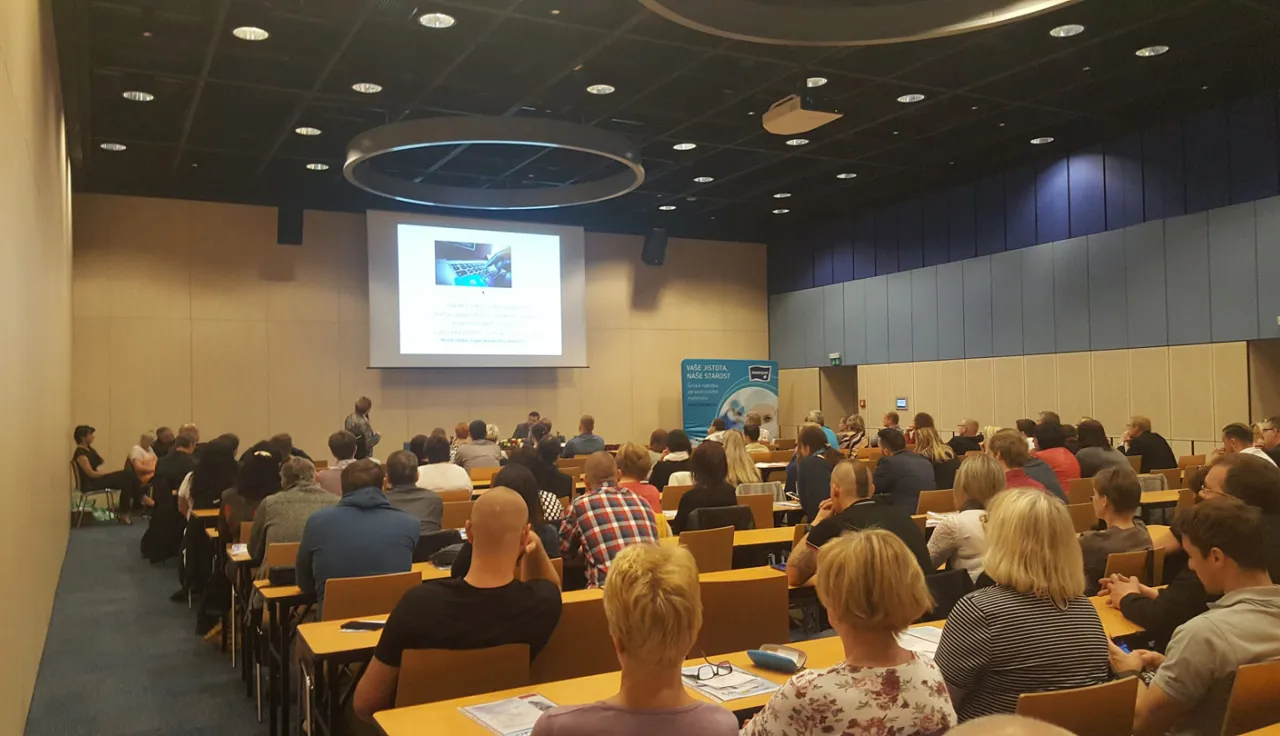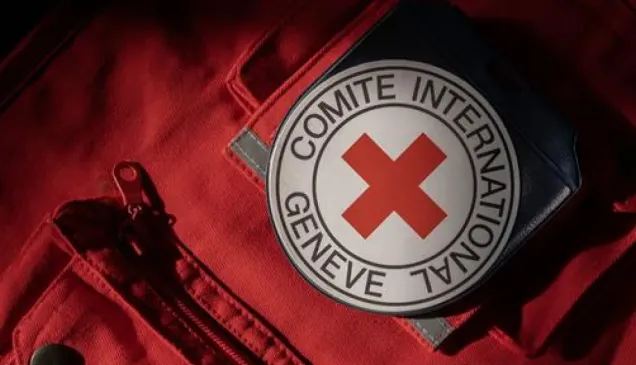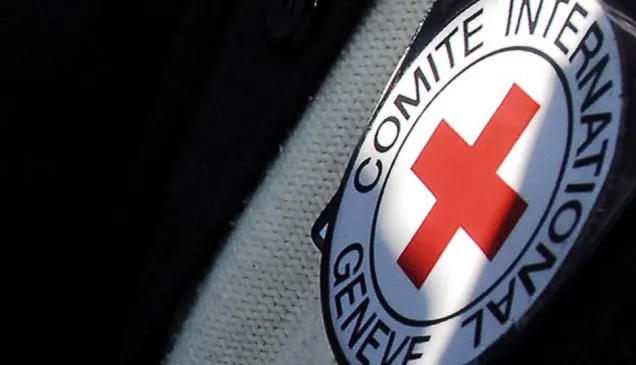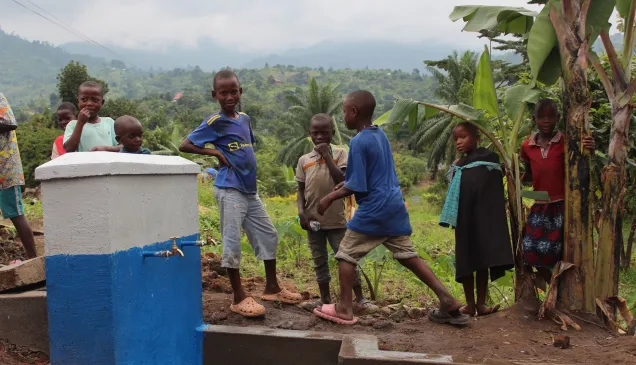Safeguarding health-care services: Will academia take up the challenge?

Palacký University, in the Czech Republic, is setting a shining example of how academia can help tackle violence against health-care personnel and facilities. In May 2017, it hosted a conference to explore the issue from a Central and Eastern European perspective. Co-organized with the International Committee of the Red Cross (ICRC) and the Czech Red Cross, it brought together representatives from governments, the military, the health-care sector, non-governmental organizations, other National Societies and academia. Now, it is incorporating key messages from the Health Care in Danger initiative into its curricula. We asked Ivana Oborna, vice-rector for international relations at the university, to tell us more.
How did you learn about the Health Care in Danger initiative?
I learned about the Health Care in Danger project a few years back, while attending a meeting on contemporary armed conflicts at the ICRC's headquarters in Geneva. I was not really aware of the issue of violence against health-care personnel and facilities before then. What struck me most was the scale of the problem and how much suffering it caused. It also became clear to me just how important it was to take steps to prepare for and prevent violence, in order to manage it better if and when it occurs; and how awareness-raising was fundamental to those efforts. As an academic, it immediately occurred to me that academia could play an important part in furthering this initiative.
What role can academia play in safeguarding health-care services?
Open discussions about the different facets of violence against health-care personnel and facilities – its causes, victims, perpetrators and impact – are needed to identify and create prevention and response mechanisms. Universities can provide a safe space for discussing such sensitive topics, even if ultimately the decisions have to be made elsewhere. Incorporating messages from the Health Care in Danger initiative into university curricula and making use of broader academic networks to raise awareness and share knowledge are also steps in the right direction.
It also became clear to me just how important it was to take steps to prepare for and prevent violence, in order to manage it better if and when it occurs
Why did you decide to organize a conference on the issue?
When I got back from Geneva after that meeting, I shared my initial thoughts with colleagues about how we could raise awareness of the issue of violence against health-care personnel and facilities. But there was another aspect that I had not considered. When we started discussing the issue with people in the Czech Republic, we discovered that lack of awareness was just part of the problem: another major challenge was the lack of coordination between different health services at the local and international levels (including civilian/military, pre-hospital/hospital and public/private services).
We had the idea of organizing a conference at Palacký University to bring all of these people together. We thought it would offer a platform for sharing experiences, discussing common challenges and exploring possible solutions between people who would not normally meet. Realizing that it would also be relevant to other countries in the region, we decided to open it out to include participants from across Central and Eastern Europe.
Was it difficult to get people on board with the idea?
It really differed from one person to another. For example, it took time for representatives from the government and the military to confirm their attendance because they needed approval from people higher up. It's important to factor in extra time for such people. It was a different story with universities, though: they were open to exploring new areas and partnerships, and the academics were quick to back the idea.
What are the next steps in addressing violence against health-care personnel and facilities?
First, we need to keep people engaged with the issue. Giving people the opportunity to share their knowledge and experiences, as we did at our conference, is an important part of that. It would definitely be worth replicating what we did across the academic network; I hope other universities will take up the challenge.
It seems that initiatives that link up the civilian and military spheres with civil and military health services are of interest not only to all the participants but also to the authorities. This is another way academia can help tackle violence against health workers
We also need to find ways to publicize initiatives or events taking place in other countries, as these can sometimes pass by unnoticed. The Health Care in Danger initiative has launched a global Community of Concern, which includes an online platform for information-sharing, but even this is not widely known. The excellent CitizenAID initiative in the UK could serve as a model for getting the public more involved. It is important that we reflect on the experiences of others and build on lessons learned.
Approaches to addressing violence against health-care personnel and facilities need to be incorporated into the academic curricula of medicine, law, journalism, etc. This is something that we have already started doing at Palacký University: key messages from the Health Care in Danger initiative were incorporated into the core curriculum for the general medicine programme starting in autumn 2017. Another good example is Camp PEIRA, a real-life simulation of a refugee camp in a non-international armed conflict, organized by our law faculty in October 2017. It brought together students from different faculties (law, medicine, etc.) from our and other Czech universities, and representatives of the Czech Army, the Czech Red Cross, the United Nations Refugee Agency and the ICRC. It was very well received. It seems that initiatives that link up the civilian and military spheres with civil and military health services are of interest not only to all the participants but also to the authorities. This is another way academia can help tackle violence against health workers.
Health Care in Danger is an initiative of the International Red Cross and Red Crescent Movement to make access to, and delivery of, health care safer in armed conflict or other emergencies. This initiative calls for the respect and protection of health-care workers, facilities and vehicles and the implementation of a series of recommendations and practical measures to safeguard health-care services and their humanitarian mission. This initiative is supported by a number of partners, individuals and organisations, members of the Health Care in Danger Community of Concern.
For more information about the Health Care in Danger project:
- Visit the Health Care in Danger website
- Join our online community
- Follow @HCIDproject on Twitter and join our call to #protecthealthcare
- Sign up to our newsletter and stay informed



